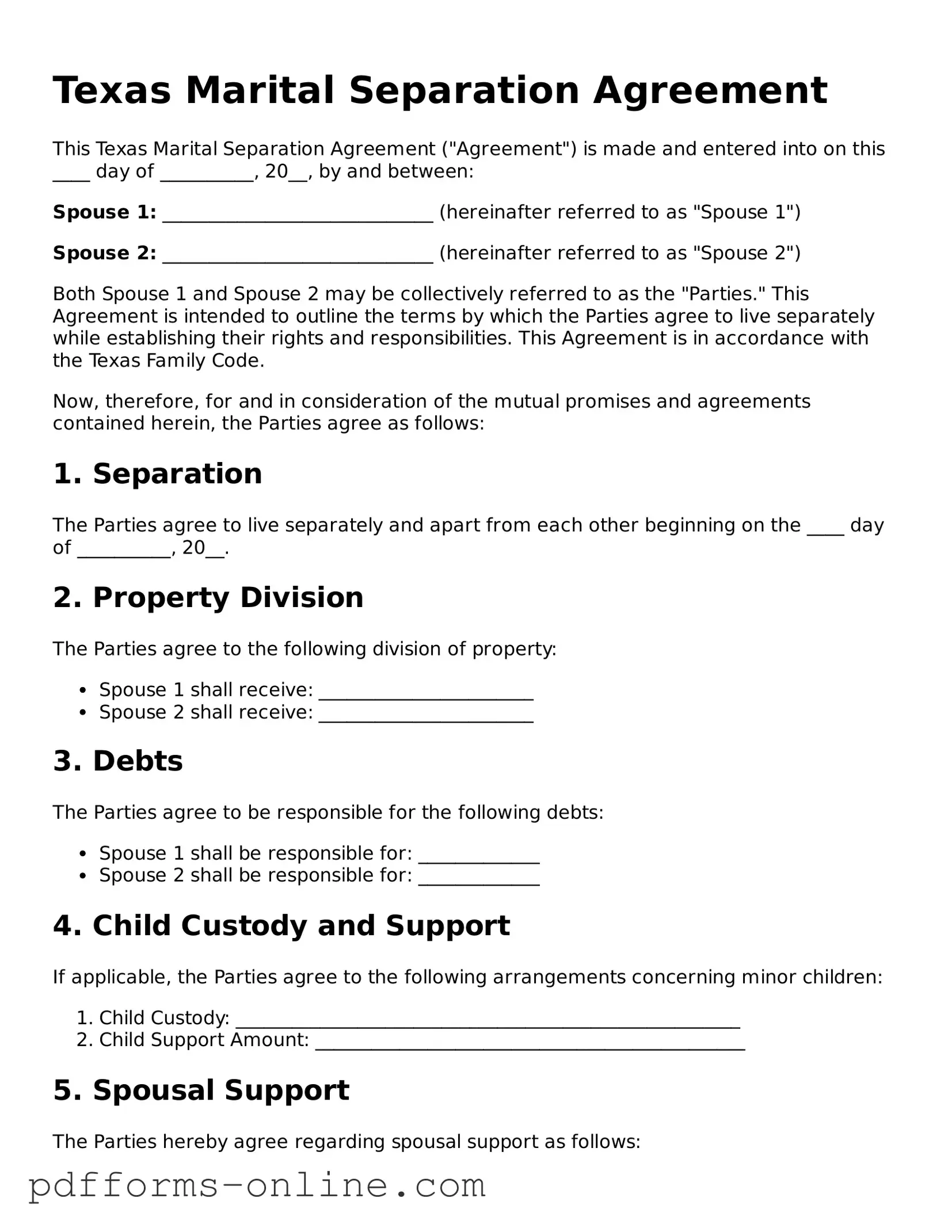Texas Marital Separation Agreement
This Texas Marital Separation Agreement ("Agreement") is made and entered into on this ____ day of __________, 20__, by and between:
Spouse 1: _____________________________ (hereinafter referred to as "Spouse 1")
Spouse 2: _____________________________ (hereinafter referred to as "Spouse 2")
Both Spouse 1 and Spouse 2 may be collectively referred to as the "Parties." This Agreement is intended to outline the terms by which the Parties agree to live separately while establishing their rights and responsibilities. This Agreement is in accordance with the Texas Family Code.
Now, therefore, for and in consideration of the mutual promises and agreements contained herein, the Parties agree as follows:
1. Separation
The Parties agree to live separately and apart from each other beginning on the ____ day of __________, 20__.
2. Property Division
The Parties agree to the following division of property:
- Spouse 1 shall receive: _______________________
- Spouse 2 shall receive: _______________________
3. Debts
The Parties agree to be responsible for the following debts:
- Spouse 1 shall be responsible for: _____________
- Spouse 2 shall be responsible for: _____________
4. Child Custody and Support
If applicable, the Parties agree to the following arrangements concerning minor children:
- Child Custody: ______________________________________________________
- Child Support Amount: ______________________________________________
5. Spousal Support
The Parties hereby agree regarding spousal support as follows:
_____________________________________________________________
6. General Provisions
This Agreement constitutes the entire agreement between the Parties concerning the subject matter hereof and supersedes all prior negotiations, understandings, and agreements.
The Parties acknowledge that they have had the opportunity to seek independent legal counsel regarding this Agreement before signing it.
7. Signatures
IN WITNESS WHEREOF, the Parties have executed this Texas Marital Separation Agreement as of the date first above written.
Spouse 1 Signature: _____________________________ Date: ______________
Spouse 2 Signature: _____________________________ Date: ______________
